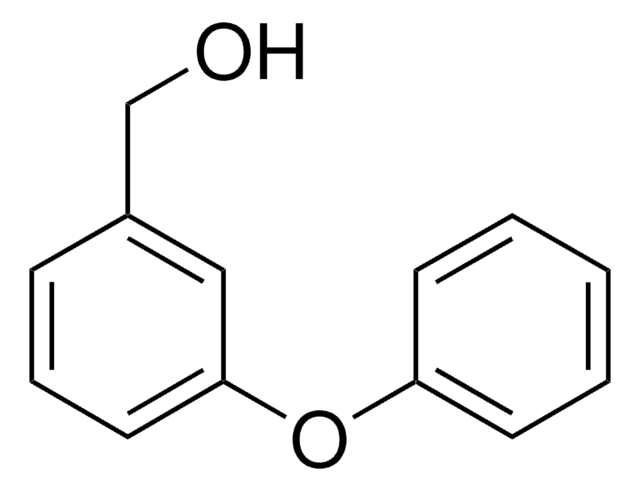67334
Diphenylether
Selectophore™, ≥99.9%
Synonym(e):
Diphenyloxid, Phenylether
About This Item
Empfohlene Produkte
Qualität
for ion-selective electrodes
Qualitätsniveau
Dampfdichte
>5.86 (25 °C, vs air)
Dampfdruck
<1 mmHg ( 20 °C)
Produktlinie
Selectophore™
Assay
≥99.9% (GC)
≥99.9%
Form
solid
Selbstzündungstemp.
1144 °F
Expl.-Gr.
1.5 %
Brechungsindex
n20/D 1.579 (lit.)
bp
259 °C (lit.)
mp (Schmelzpunkt)
25-27 °C (lit.)
27-29 °C
Dichte
1.073 g/mL at 25 °C (lit.)
SMILES String
O(c1ccccc1)c2ccccc2
InChI
1S/C12H10O/c1-3-7-11(8-4-1)13-12-9-5-2-6-10-12/h1-10H
InChIKey
USIUVYZYUHIAEV-UHFFFAOYSA-N
Suchen Sie nach ähnlichen Produkten? Aufrufen Leitfaden zum Produktvergleich
Verwandte Kategorien
Allgemeine Beschreibung
Anwendung
Rechtliche Hinweise
Signalwort
Warning
H-Sätze
Gefahreneinstufungen
Aquatic Acute 1 - Aquatic Chronic 2 - Eye Irrit. 2
Lagerklassenschlüssel
11 - Combustible Solids
WGK
WGK 2
Flammpunkt (°F)
239.0 °F - closed cup
Flammpunkt (°C)
115 °C - closed cup
Persönliche Schutzausrüstung
dust mask type N95 (US), Eyeshields, Gloves
Choose from one of the most recent versions:
Besitzen Sie dieses Produkt bereits?
In der Dokumentenbibliothek finden Sie die Dokumentation zu den Produkten, die Sie kürzlich erworben haben.
Kunden haben sich ebenfalls angesehen
Unser Team von Wissenschaftlern verfügt über Erfahrung in allen Forschungsbereichen einschließlich Life Science, Materialwissenschaften, chemischer Synthese, Chromatographie, Analytik und vielen mehr..
Setzen Sie sich mit dem technischen Dienst in Verbindung.











